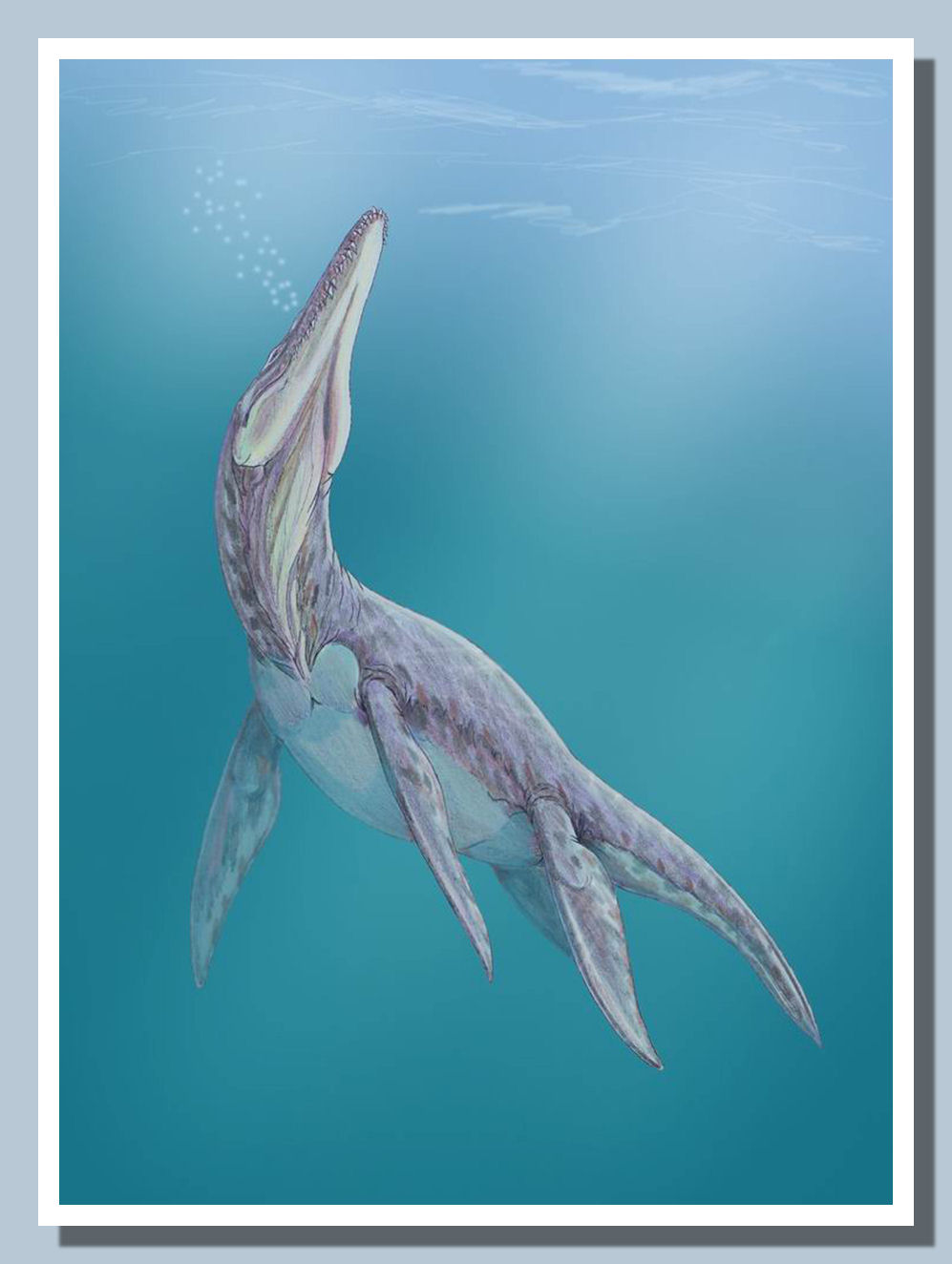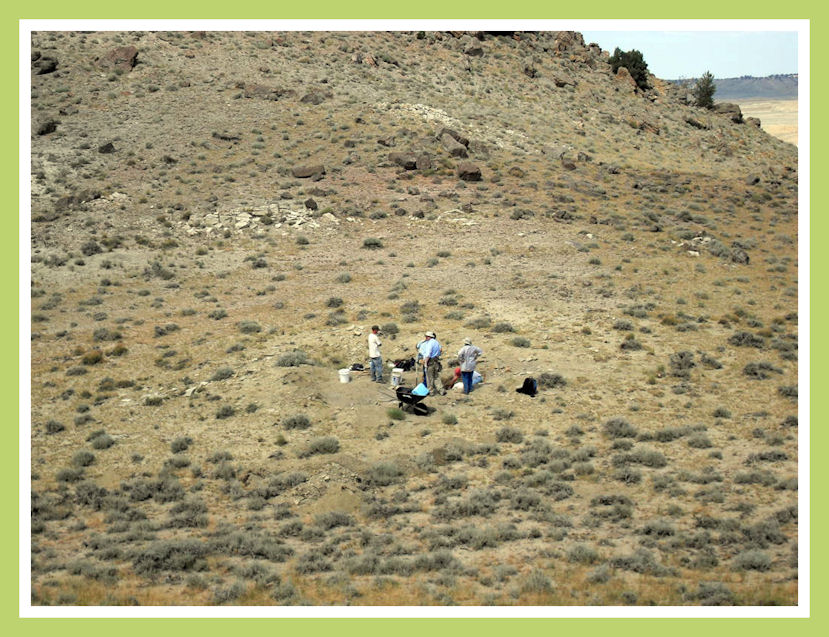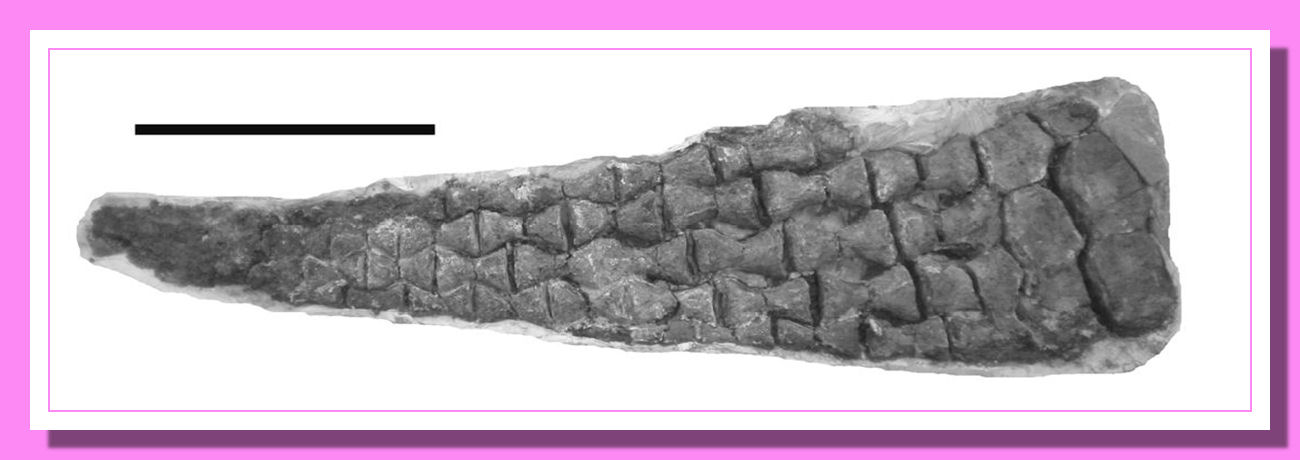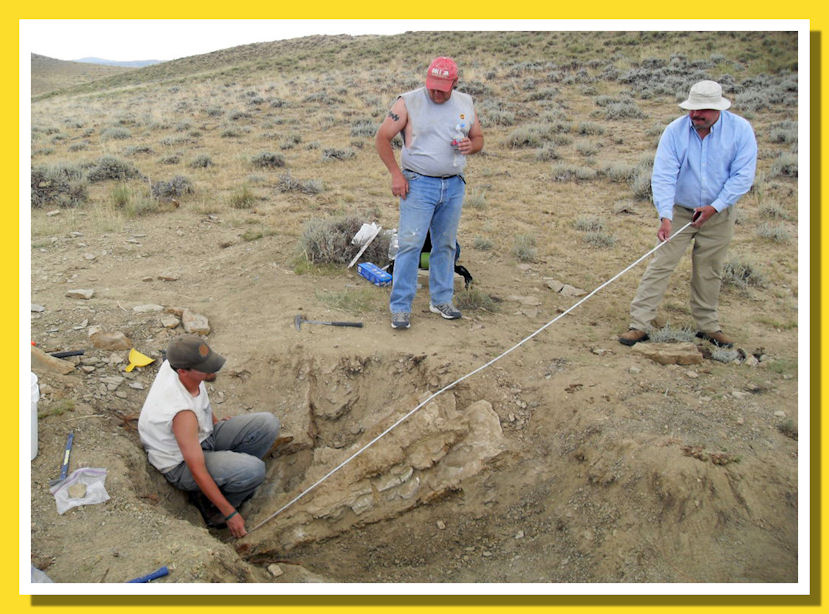The Largest Pliosaurid from North America
by Dean R. Lomax
Megalneusaurus rex
Megalneusaurus is an extinct type of pliosaurid; characteristically pliosaurs have a large body, short neck and huge skull with numerous teeth. As the title suggests, Megalneusaurus rex (Fig. 1) is the largest pliosaurid discovered (so far) in North America, and is thus a highly significant discovery.
.
Figure 1. Image reconstruction of Megalneusaurus rex courtesy of Dmitry Bogdanov.
Discovery, Geological setting and Location
In 1895 Wilbur Knight discovered, and excavated a partially articulated but incomplete, skeleton of a pliosaur while fossil hunting near the small town of Ervay, Wyoming. This discovery yielded a variety of remains including a complete hindlimb, portion of the pectoral girdle, ribs and vertebrae, the specimen was later described by Knight in 1898. The remains of M. rex were found in sediments dating to the Jurassic Period (Oxfordian), specifically the Upper Redwater Shale member of the Sundance Formation, of which M. rex is the only pliosaurid known. The material collected by Knight was stored in the collections of the Geological Museum, University of Wyoming in Laramie, where Knight was curator of the museum and professor of Geology and Mining Engineering.
Rediscovery
During the year 1995 the Tate Geological Museum in Casper, Wyoming were planning to create a display of marine reptiles collected from the Sundance Formation, during the research they happened upon a cast of the original forelimb collected by Wilbur Knight in 1895, the original is on display in the Geological Museum, University of Wyoming. Palaeontologist William (Bill) Wahl showed an interest in the cast which spurred an inquest to find the original type locality of M. rex. Through study of several original letters written by Knight corresponding to numerous palaeontologists of his era, Bill gained a much better understanding of the original dig site, and hoped if rediscovered the site may shed light on new, additional material of this most significance discovery. During the summer of 1996 the original type locality of M. rex was rediscovered (with help from fossil collector Mike Ross) in the Gas Hills area, near Dutton Oil Basin and the original western border of Natrona County (Fig. 2). The original ‘pit’ was not too dissimilar from the original descriptions of Knight, numerous badly weathered bone fragments were scattered in patches throughout the area.

Figure 2. Rediscovery of the type locality.
New Material
Since the rediscovery several fossil collecting excursions to the site have taken place including the summers of 2007, 08,09,10 and 11. During the dig in 2008 a fully articulated and near complete forelimb was discovered and removed, numerous isolated fragmentary bones were also collected including pelvic material, all the newly discovered material were damaged by weathering, amongst the bones were several chunks of concretion containing cephalopod hooklets, interpreted as stomach contents of M. rex. Additional material assigned to M. rex has been documented from the Naknek Formation in southern Alaska.
Figure 3. In situ forelimb of Megalneusaurus rex.
Importance
Original discovery of this rare site was and still is very important. The rediscovery of this historical palaeontological dig site has also proved important with the discovery of additional material and the true determination of the age, and indeed the type locality in which M. rex derived. From this discovery it allows comparisons with other Jurassic pliosaurs from Europe and South America.
The largest pliosaur? and recent finds
With an estimated forelimb length of over a metre and the hindlimb over 4.5 feet in length it’s probable that Megalneusaurus is one of the largest pliosaurs to have lived. Unfortunately no skull material was ever collected from the site which could have given a better understanding to the true size of M. rex, although it has been estimated that M. rex may have reached lengths of around 25-30 ft. However, when it comes to discussing the largest/biggest pliosaur that has ever been discovered Megalneusaurus has generally been ‘forgotten’ with only a few mentions in the literature. Other large pliosaurs such as Liopleurodon known throughout Europe, is perhaps one of the most famous pliosaurs worldwide, in recent years the discovery of both the Svalbard Pliosaur and Weymouth Bay Pliosaur have dominated the headlines as possibly the largest pliosaurs that have been found so far.

Figure 4. Prepared forelimb of Megalneusaurus rex taken from Wahl et al., 2010. Scale bar = 30 cm.
Acknowledgements
I wish to thank Bill Wahl for inviting me to join two excavations during the summers of 2008-09 and also for reviewing this article.
Further reading
Wahl, W. R., M. Ross, and J. A. Massare. 2007. Rediscovery of Wilbur Knight’s Megalneusaurus rex site: new material from an old pit. Paludicola 6:94–104.
Wahl, W. R., J. A. Massare, and M. Ross. 2010. New material from the type specimen of Megalneusaurus rex (Reptilia: Sauropterygia) from the Jurassic Sundance Formation, Wyoming. Paludicola 7(4):170-180.
Dean R. Lomax © 2011

